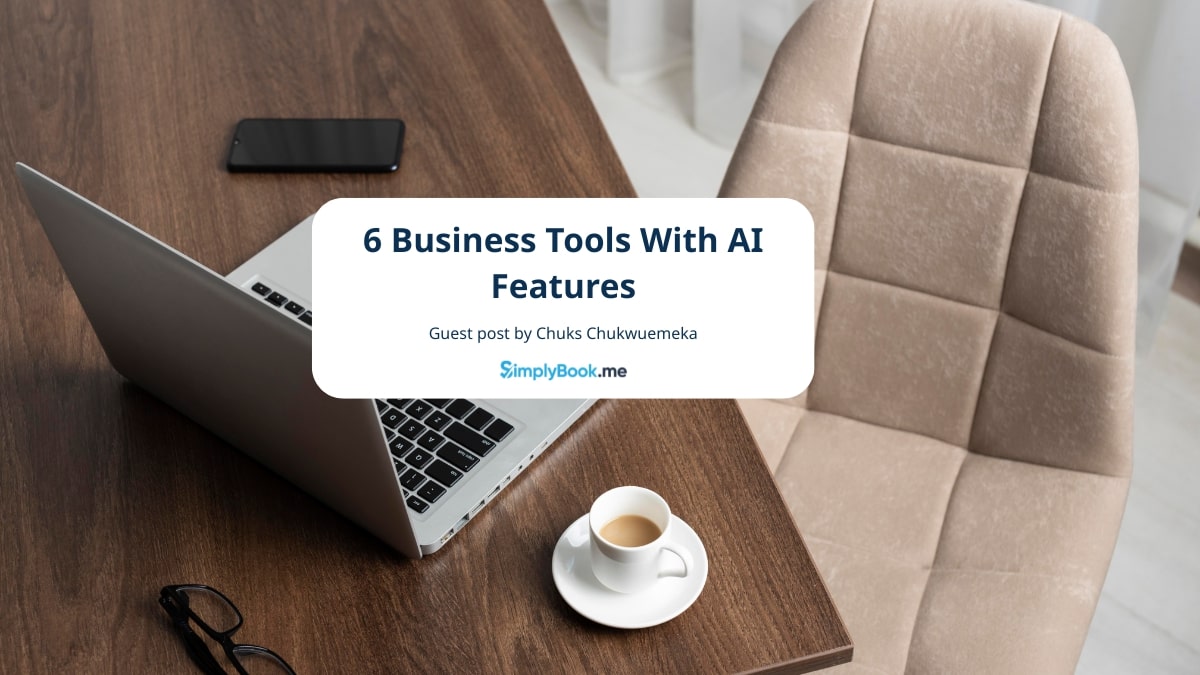12 Ways to Welcome New Team Members to the Company

This post is also available in:
![]()
![]()
![]()
![]()
Picture yourself starting a new job at a new company. It’s exhilarating yet nerve-wracking, right? You would love to be greeted and welcomed warmly on your first day, without awkward moments or hitches. How you welcome new members to the team is vital, but some companies tend to spend more time and money on a going-away party than on welcoming new members to the company.
If you want to welcome new members the right way, creating a killer welcome and onboarding process is crucial. Make sure your whole organization is in on it so that the newbie feels appreciated, welcomed, and expected.
Let’s have a look at some creative ways to welcome new members to the company team:
1. Inform Your Staff
Imagine walking into your new workplace and getting several puzzling looks from other employees and blank faces greeting you with “Umm…can I help you?“
Really awkward, right?
That’s not how your new employee wants to remember their first day on the job.
So, communicate with your staff and let them know a new team member will be coming so that they’re prepared to see a new face in the building.
Send your team an email a couple of days before, and get them excited to give the new employee a warm welcome. If you are a bigger corporation or a remote team spread across various time zones, you might consider using email marketing tools to ease up your work.
2. Let Them Start Later Than Usual
Are they starting their first day late? Yes, it sounds weird, but it’s a great idea.
New workers are likely to show up early, and you do not want them waiting around, awkwardly wondering what they should do or where they should go while you prepare for their induction.
Starting new members later allows you to prepare a little more. You don’t want them waiting for you to finish checking your emails or close up staff briefings.
So, let the new employees arrive later and give yourself some time to be fully prepared for them.
3. Get Their Desk or Workspace in Order
The office or assigned desk will likely be the new employee’s first stop upon arrival. Best make it welcoming. It can make a big difference walking into a well-prepared workspace.
Be sure to remove all the old employee’s belongings before the new one arrives, so they don’t feel awkward as if they are just another replacement.
Don’t wait around for staff to arrive before you start setting up their workspace and organizing systems; it can be pretty frustrating being seated at another colleague’s desk while your workspace is being prepared.
Get their equipment set up and up-to-date before they arrive. You might need help from the IT department with any logins or access cards.
Email accounts, internal chat systems, and specific work programs are other vital things to have done beforehand.
Also, make sure to get the employee’s virtual workspace in order. This might include things like
- Use your website builder to update the new employee’s information on the company’s employees page.
- Creating an email account for the employee and sending them the credentials before starting their first day
- Ensuring that all digital onboarding material is easily accessible
- Assigning an account on communications, content management, LMS, and other platforms used by the company

4. Have an Impressive Welcome Kit
A welcome kit is a great way to show a new staff member that you’re happy to have them and eager to start working together. It’s a great way to show that your company values its employees.
Your kit should be ready for your new employee as soon as they walk through the doors.
A well-curated welcome kit goes beyond the required items by adding a unique flair like having great functional things for work and fun.
Branded gifts could double up as company advertising, such as baseball caps, flash drives, and lunch bags. Don’t forget to make a logo and add it to gifts as part of branding.
Some ideas that could fall into the fun category for welcome gifts could be dinner coupons, swag-hoodies, or some candy.
We live in a digital age, so there’s nothing quite as charming as a handwritten card signed by colleagues. Get your staff to personalize a message on the card and show your new employee that you care enough to send something more thoughtful than a generic welcome email.
You can even make the card creation process more interesting for everyone by opening a competition for your staff. The most creative welcome card design wins a fun prize.
And, since remote working is so ordinary these days, why not send your new remote workers a welcome kit too?
5. Have Onboarding Documents Ready
This is perhaps your most important step when you hire a new employee. They’ll use these documents as their liferaft until they get established in their role.
Besides having health and safety or training documents, some examples of other documentation could be:
- Company goals for them to achieve
- Outline the tasks they should own
- Meetings they are expected to show up for
- Names and contact information of the team members they will engage with
- A training checklist for them to complete
- Glossary of terms, acronyms, resources, and internal tools to get familiarized with
The more documentation you hand them, the more they will understand your organization and settle faster with fewer questions.
Get their team involved and allow them to place any additional documents that they feel will be necessary for their team to function optimally.
If your company has social media accounts (which it should), send invites to your new team member. Depending on their role in the company, you may consider making them an administrator on social media accounts or a niche nano-influencer, getting them actively involved.
Keep in mind that no one enjoys sitting and reading through dozens of documentation pages. Consider converting those documents into videos that are short and informative.
Another great idea is to create interactive eLearning material that requires more than just sitting down and reading a document or watching a long, boring video.
Instead, you may opt to create an in-house directory of online courses designed for the workplace and employee education.
And remember to ensure all your information is kept up-to-date before handing it out.
6. Assign an Office Buddy
It sounds a bit babyish, but having a work buddy helps newbies find their way around a new environment and fit in a lot faster than if they have to figure everything out on their own.

Assign someone in a similar role, age, or personality, so there will be no awkwardness. An office buddy will help answer any questions about written and unwritten office rules.
What are unwritten office rules? Things such as what not to put in the communal microwave, best places to grab lunch nearby, or tricks on handling the jammed printer.
Having a buddy allows your new member the opportunity to ask questions they are otherwise shy to ask their management, letting them be open-minded and ask more about company culture.
Just be sure to choose a mentor who is willing, available, and experienced.
Nothing is more agonizing than having a mentor who feels forced into it and ends up being more damaging to the newbies’ morale.
7. First Days Are Introduction Days
Most new employees are quite nervous about their first day at their new job. Try to make them as comfortable as possible by making their first hour or two reasonably informal.
Give them an office tour, introducing them to colleagues along the way.
If possible, invite them to the next all-hands meeting and afford them a few minutes of introduction and a small chat with other employees.
Don’t forget to take them through to the HR department to get acquainted with the team that handles all their HR matters, such as pay periods, expenses and deductions, vacations, and disputes.
Show your recruit that your company has an open-door policy and their voice is important to the company.
During the introduction days, another small detail is to schedule a video call with remote workers. Go the extra mile – don’t just send an introduction email. Arrange a video call so they can meet each other.
Thalita Ferraz, who is the owner of the popular fashion blog HerBones.com, explains;
“One of my biggest struggles with when I began hiring employees was onboarding them properly. My first few hires didn’t stick around for more than six months, but after creating a standard onboarding process, my employee retention has been 100% for the last three years.”
Your introduction days can be as short as a few days or spread over a few weeks, depending on the availability of other employees and the size of your organization.
8. Hold a Scavenger Hunt
This is like an Easter egg hunt but for adults, in an office.
This search will consist of exercises that the newbie has to carry out, such as drawing directions to the nearest emergency exit.
It’s a friendly twist on a generic organizational chart or folder of company information for the employee to learn.
If you want new team members to be clued-up with names, faces, and roles, make a collage of employee photos and let them go around matching the pictures with names and positions. You could also ask them to fill out unique personality traits with each person.
A scavenger hunt encourages them to become acquainted, meet and learn about the people within their team and the organization, and understand the layout of the office.
It also helps the other employees meet the new recruit and briefly interact with them while gathering info about hobbies, pets, family, or favorite destinations.
Having this data on hand takes a great deal of pressure off your new employee, remembering scores of faces and fun facts about each of them. At the end of this fun exercise, the employee will have a short but handy reference guide that is theirs to keep.
9. Have “Rookie” Days
We know that first impressions count, not only the new employee’s impression of the company but also the staff’s impression of their new member.
A rookie could decide to bring in something for their team to share and enjoy, like donuts or cookies.
Have it set up at their desk so other employees can come to meet them, share small chats, and get to know each other.
Some companies have casual Fridays whereby the company gets treats for their employees and nominate a new team member to walk around handing them out, so they can actively interact with other staff.
As a company, you could also send a surprise welcome gift or delicious treats to the new employee’s family, scheduled to arrive within the first days of them joining.
10. Throw a “100th-Day” Celebration
It’s charming having a glamorous welcome into the company, but then you blend into the system, and suddenly you’re not the new team member anymore, you’ve blended into the crowd.
The first three months of your new employees’ arrival are delicate, and you should be checking in with them regularly, if possible, daily.
Try scheduling regular face-to-face meetings with them to get feedback, analyze their progress, and keep them feeling noticed.
By the time they have completed 100 days at the company, they should be well absorbed, established, and done with their training. This is an excellent time to organize a celebration, and you can now throw an on-the-job festivity to celebrate this milestone.

This type of party is a fantastic way to show new employees that you appreciate them, recognize their efforts, and value their position on your team.
Hopefully, this will rekindle their enthusiasm and motivate them to keep working their best.
Be sure to check in with them after a further six months on the job, not forgetting to make a bigger celebration after their first year, the second year, etc. This will prevent them from feeling that they have blended into the crowd and are no longer valued.
11. Schedule a Party-Esque Team Lunch
This one will surely be a hit with all your employees!
Gather your team members together for a party-esque lunch or coffee date and arrange this to happen at the end of the new starters’ first week.
You can even take it up a notch by closing the office early that day, making the newbie feel special. I’m sure all employees would enjoy this little perk and want to do it for every new recruit.
Maybe think of having a second lunch date but keep it intimate to just the new employees’ core team.
This powerful gesture lets the new employee know that your company is friendly and upholds a social culture while helping the entire workplace develop a deeper sense of community.
You may also think of assigning team members to schedule lunch dates with the new member often, especially in their first month, because no new person wants to sit alone during lunch or be forgotten about after a couple of months.
12. Ask Other Employees
At some point, every employee was a new team member and also went through a welcome process.
Ask people individually about their welcome to the company. How did they feel on their first day or in their first week, what did they like about it, or what you could do differently to make this experience better for the next person?
This information is important and helps you proactively analyze your company’s welcome experience.
First-hand feedback is also vital in making necessary changes to enhance current procedures.
And, when you get other employees involved, it reminds them that their opinion is important. This shows that your company has an open-door policy and all staff input is valued.
Review your welcome program regularly to ensure that new staff enters into a warm environment to settle in well and thrive.
Conclusion
Getting the right team member is timely and can cost your company money. So when you find the right fit, ensure you welcome and integrate new team members well, and avoid losing them due to a poor first impression.
Making them comfortable with the company policies and culture is an integral part of their onboarding process that your company should master and improve with each recruit.
As important as it is to get all necessary information to the new recruit on their first day or first week, do not bombard them and overwhelm them with documentation and information.
Lastly, don’t stop caring about the newcomer when they become a long-standing employee. Make sure they’re kept engaged and show appreciation during their time at your company.
Your turn. What other ways have you experienced when being welcomed to a new company? Let us know below!
BYLINE:
Ron Stefanski is an online business expert and owner of OneHourProfessor.com, which has over 100,000 monthly visitors and helps others create and grow their online businesses.



Comments
0 commentsNo comments yet